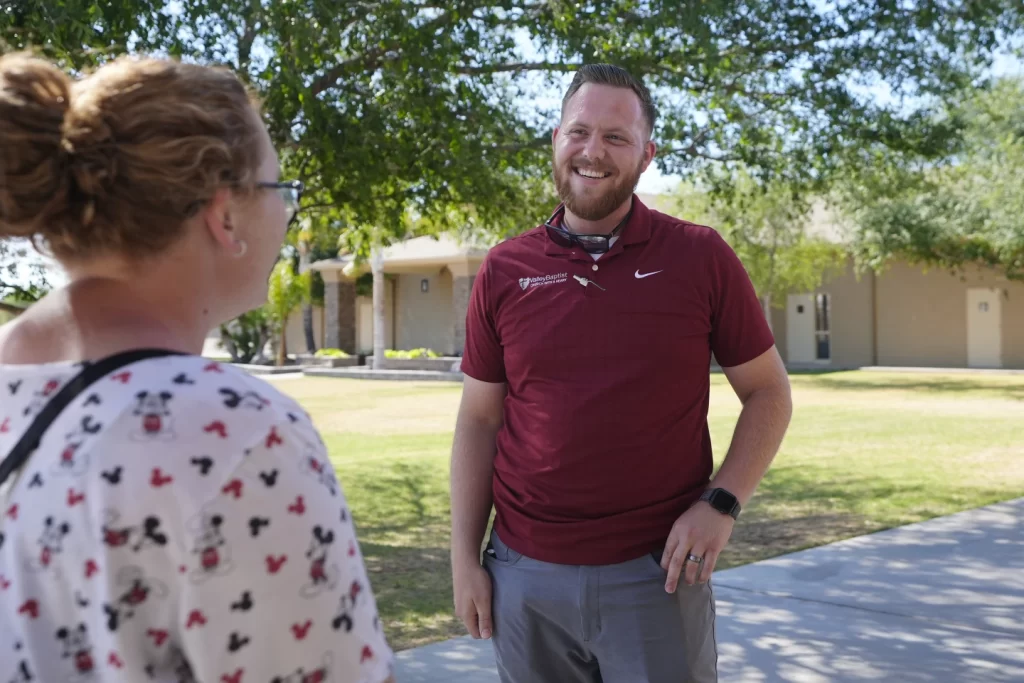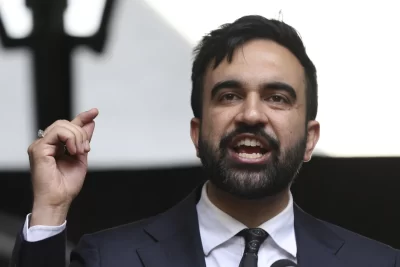
MESA, Ariz. — Karl Peterson has been living the cruel inverse of the American dream. His rent keeps getting higher, but his apartments keep getting smaller.
Peterson left the Midwest nine years ago for the epicenter of an economic boom, only to gradually learn that endless sunshine and desert views are increasingly among the few bargains left in Arizona. Peterson married his wife, Tani, and they struggled to save for a home, moving through four apartments as their rent nearly tripled from $625 to $1,800 a month.
He does not believe that either presidential nominee, Democrat Kamala Harris or Republican Donald Trump, is addressing the paradox of a country that has never been this wealthy even as so many people see themselves left behind. His trust in government is running low. The negatives of inflation and national division are easier to glimpse than are signs of hope.
Voters like Peterson are at the fulcrum of the electorate in Arizona and the handful of other key states that will decide which candidate wins the White House and which party controls Congress.
“I don’t think they’re addressing what’s really going on with me, with my family,” said Peterson, who figures he will need to leave Mesa, east of Phoenix and the state’s third-largest city, for Indiana or Wisconsin if he ever hopes to attain the middle-class promise of owning his own home.
Promises by both parties to “help the middle class” ring hollow to many voters who have heard those commitments before, only to see the pressures on housing, education, career, parenthood and the tending of their own aging parents mount.
Harris has pledged $25,000 for first-time homebuyers and tax breaks for new parents. The Trump campaign says mass deportations of migrants living in the U.S. without permanent legal permission will free up housing and that higher tariffs will create job opportunities. Voters are focused on the inflation of the past three years, but Federal Reserve data reveal a deeper gap in which the United States has so much wealth that it can be easy for anyone to feel worse off than their neighbors.
Being — and staying — middle class in a nation of millionaires
Fed data released late last year point toward this complicated reality.
In 2022, when many voters felt inflation was strangling the economy, for the first time the average U.S. household was worth more than $1 million. Yet there is a difference between meeting that average and being the typical household, despite gains since 2019. The median household had a net worth of just $192,900. That’s the level at which half are above and half are below.
Plenty of Americans can look at their personal finances and see reasons for comfort, even if they mostly register despair when asked about the health of the country as a whole. Nearly 6 in 10 described their own economic situation as good, even as 7 in 10 said the nation was on the wrong track, according to a September poll by The Associated Press-NORC Center for Public Affairs.
John Akers, 34, is one who feels lucky with how the economy has treated him, but worries too many of his family and friends are being left behind.
He and his wife have seen their fortunes improve over the past several years as their high-end audio-visual business has thrived, and the fixer-upper they bought in 2015 in Phoenix has proved to be a wise investment.
At the same time, some of their aging relatives have struggled with rising costs, and a few close friends are thinking about ditching Arizona to find cheaper housing. It’s left him wondering if Washington is too focused on hot-button cultural issues.
“No matter what, we’re going to have polarization at the end of this election,” said Akers, who plans to vote for Trump. “The political conversation is too often pitting the middle class against each other, and there’s been too little focus on the issues that matter, like inflation and housing costs.”
Arizona’s economic gains make it a swing state
In some ways, Arizona’s Maricopa County is proof of America’s vitality and ability to generate wealth out of seemingly nothing but grit, hard work and applied intelligence.
The state’s 11 electoral votes could make the difference in who wins the presidency, yet the area’s success is overshadowed by fierce political hostilities and a sense that in a warming, costlier world, things are bound to get harder.
The county was once nothing but desert, so vast and with so few people before World War II. But the land was cheap and once water and air conditioning arrived, the cities of Phoenix, Scottsdale, Chandler, Glendale, Tempe and Mesa spread across the once dry sandstone.
Tech companies like Intel, TSMC, Google and others arrived, as developers said the time it took to get approval for a new housing development in the county increased. Out of the biggest counties nationwide, Maricopa posted the largest percentage job gains so far this year, according to the Labor Department. Home prices have nearly doubled since 2016, according to Zillow.




